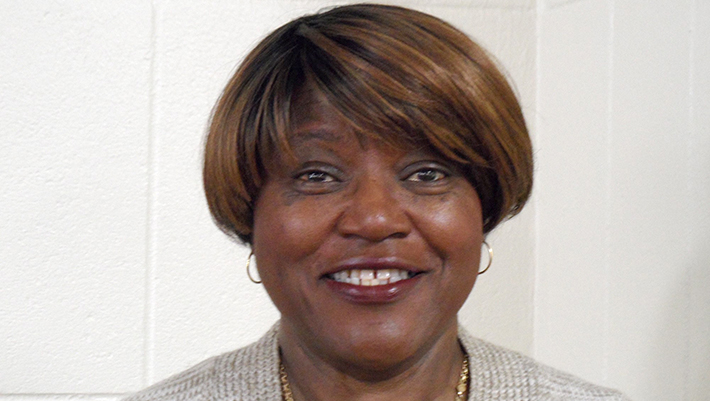
By Joseph Hammond
Urban News Service
When Pat Raynor developed cataracts, she hoped her optometrist would refer her to a qualified eye surgeon.
But, the 65-year old Virginia woman said, the optometrist who handled her routine eye exams seemed more interested in business than medicine. He pressured her to accept a form of care known as “co-management” in which he – rather than a surgeon – would handle post-operative checkups.
“When I went home, I kept thinking about it, and I knew something was not right,” Raynor said, explaining her decision to seek successful treatment out of state.
Raynor is one of the millions of Americans who develop cataracts – a common condition of aging in which a thick film that develops in part of the eye can lead to cloudy vision or in some cases blindness if left untreated. Cataracts are the leading cause of blindness in the world, according to the UN’s World Health organization. More than half of all people in the United States will have a cataract or have had cataract surgery, by the time they are 80.
African-Americans like her may be more prone to certain types of cataracts. Some 54% of African-American nursing home residents suffered from cataracts versus 37% of whites, according to a study published in the Ophthalmology edition of the Journal of the American Medical Association.
African-Americans may also be especially vulnerable to provisions buried in the Medicare Act of 1992. Guidelines adopted in that year allowed a practice known as “co-management” for eye-surgery. In most surgical procedures the operating surgeon is responsible for post-operative care. Under a “co-management” relationship, an ophthalmologist or eye surgeon performs say a cataract operation and that patient’s optometrist performs post-operative care. These fee-sharing arrangements have grown since 1992 to dominate eye-care in America.
Optometrists are technicians who are specialized in preserving vision and the overall health of the eye. On average optometrists attend four years of college as well as graduate school. Though a few optometry schools allow applications from students, who didn’t complete an undergraduate degree. Virtually all optometrists earn doctorate degrees and become “doctors of optometry” by virtue of their PhD degree. All PhDs may legally be called doctors. Few patients realize that “doctors of optometry” are not medical doctors. Optometrists may also work as interns or residents in the office of an optometrist.
Ophthalmologists are medical doctors. After completing an undergraduate degree, they attend four years of medical school. Their medical degree complete, a would be ophthalmologist then spends several years getting hands-on training. Usually, an internships which usually last one year is followed by three years of residency. Some also complete an additional fellowship year as well.
Co-management was intended for use only in limited circumstances, particularly by rural patients who might have trouble reaching an ophthalmologist. Instead, it has become a mechanism for sweetheart deals between optometrists and ophthalmologist who reward each other through mutual referrals, critics say.
Today roughly nearly one in five cataract surgeries are performed in a “co-managed” relationships, with almost all of them taking place in urban areas.
Since most elderly African-Americans live in urban areas, they stand a higher risk of being steered toward such fee-sharing arrangements. Most patients are not told that the fees are being split between the optometrist and the eye surgeon. Complications after eye surgery are relatively rare. But, for those that do, the consequences can be severe, especially if there follow-up care is with an optometrist, who is not a medical doctor, rather than an ophthalmologist. In 2009, a scandal at a Palo Alto California veteran’s hospital revealed that many individuals treated for cataracts could have potentially had better health outcomes if they were treated by ophthalmologists. Some individuals were blinded.
Nevertheless, many health care professional argue “co-management” offers safe and efficient care. “With the continued focus on patient-centered care, the co-management of surgical patients, such as those having cataracts removed or laser surgery, is the standard and optimal approach to pre- and post-operative care,” said Christopher J. Quinn. O.D., president of the American Optometric Association in a written statement to the American Media Institute, “…This is especially true in underserved areas, as it is estimated that 90% of people in the U.S. live within 15 minutes of a doctor of optometry. Co-management allows patients to receive care from a doctor they already know and trust, maintaining their patient-doctor relationship.”
Quinn also noted that optometrists and ophthalmologists have been co-managing patients for decades in many jurisdictions and that the practice is recognized in all 50 states. He also said that co-management can occur in other types of medicine.
Still many patients remain in the dark. A 2006 survey by the National Consumer League found that only 30% of consumers knew the difference between optometrists and ophthalmologists.
For her part, Raynor said that it is vital that patients be given the information they need – regarding both medical capabilities and financial relationships among doctors – in order to make informed choices about their eye sight.
“A lot of people can’t afford cataract surgery, and I would have probably gone through with co-management but, I didn’t have a credit card,” she said.
She is glad she had her care overseen by ophthalmologist. “After my ordeal, I am just thankful to have my eyes, and now I can see even better than before cataracts. I was having a hard time just seeing and focusing. You know there used to be a house I would drive by, this beige house, but, after my cataracts were removed, I noticed the house was, in fact, pink.”













